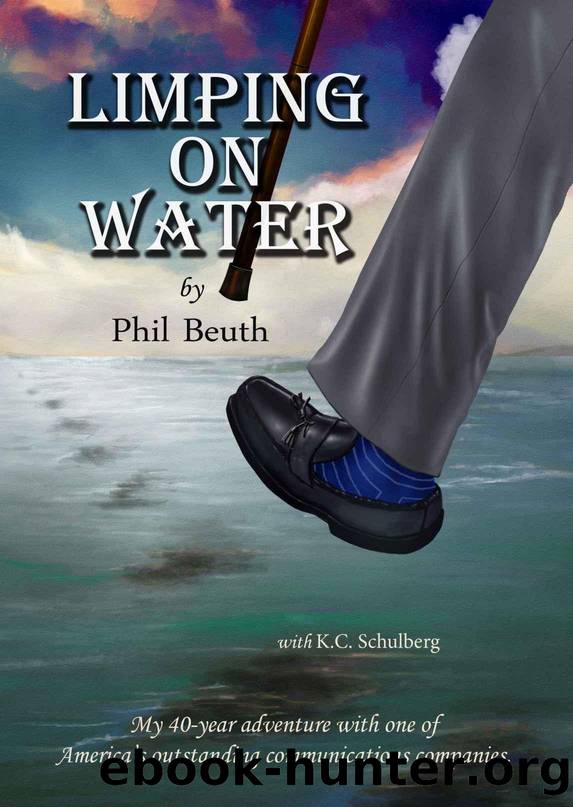Limping on Water by Philip Beuth

Author:Philip Beuth [Beuth, Philip]
Language: eng
Format: epub
Tags: Autobiography, Biography, Business, Communications
ISBN: 9780996408028
Google: JPSHjgEACAAJ
Publisher: Smart Business Network
Published: 2016-03-15T00:00:00+00:00
CHAPTER NINETEEN
In the Black (ink)
All during this time, starting in 1967, Tom Murphy was actively seeking new revenue sources to add to the growing broadcast group and he now settled on publishing â specifically newspapers and magazines â for two reasons. First, he had hit his threshold of station ownership, so every new acquisition had to be offset by the sale of an existing asset. And second, as broadcasting was an advertiser-supported media, owning another of the prominent advertising platforms made good economic sense.
Like any skilled hunter (and Tom was a superb marksman), patience and agility proved his strong points. He had been keeping a watchful eye on one of Americaâs oldest and most distinguished family-owned fashion publishing houses. Fairchild Publications was founded in 1892 by Edmund Fairchild, a peddler, who took over the Daily Trade Record (later the Daily News Record), a failing newspaper that covered the menâs clothing business. Ed Fairchild built that newspaper into a successful venture and in 1910, took what was originally an insert in DNR, and created a powerhouse stand-alone known as Womenâs Wear Daily. Aside from these two blockbuster publications, Fairchild boasted a handful of other fashion trade papers.
When Tom caught wind that Fairchild might be shopping for a buyer, he thought he might have found the right match for his broadcast group. And when Tom knocked on their door, his reputation preceded him. He found a warm reception from the Fairchild family who welcomed Murphy and the prospect of a well-run, structured company like Capital Cities. Similarly, Murph welcomed Fairchildâs $20 million in gross sales. Fairchild, a company unaccustomed to fiscal discipline and lofty profit margins, needed a top-to-bottom restructuring in order to conform to Capcities business practices. Tom convinced Dan Burke to leave Detroit for New York to take on a set of challenges in a brand new industry. Fairchild, then led by John âFashion Personifiedâ Fairchild, responded well, as John ironically enjoyed more editorial autonomy than when the company was run by his own family. His staff of veterans also appreciated that the new âfresh-to-printâ ownership team respected the lore, history and traditions of the magazines. Despite a few early bumps in the road, mutual respect developed rather quickly, producing some strong, long-term âpartners.â The Fairchild acquisition proved complex, but the benefits were sustained and far-reaching, especially as Fairchild brought a strong bench of seasoned professionals to a company thirsty for a broader executive team. From the ranks of Fairchild alone, dozens of talented assets found their way into our management; people like John Fairchild, Jim Brady, Bill Dwyer, Dan Newman, David Branch, Dick Lynch, Steve Stoneburn, Phil McGovern, Octavia Thompson, June Weir, Michael Coady and Marty Rosenblum, among others. Many of these executives participated in subsequent Capcities/Fairchild ventures, like the launch and immediate success of W Magazine. In addition to Fairchild talent, the purchase also introduced changes and additions to the Capital Cities executive ranks. Burke named Bill James to replace him in Detroit. Joe Doughertyâs role was expanded as he found himself involved in several print purchases as well as broadcasting.
Download
This site does not store any files on its server. We only index and link to content provided by other sites. Please contact the content providers to delete copyright contents if any and email us, we'll remove relevant links or contents immediately.
I Have Something to Say by John Bowe(3467)
Einstein: His Life and Universe by Walter Isaacson(1969)
What Happened to You? by Oprah Winfrey(1733)
Doesn't Hurt to Ask by Trey Gowdy(1607)
Solutions and Other Problems by Allie Brosh(1298)
American Dreams by Unknown(1239)
Disloyal: A Memoir by Michael Cohen(1209)
The Silent Cry by Cathy Glass(1096)
Talk of the Ton by unknow(1019)
Infinite Circle by Bernie Glassman(1018)
Don't Call it a Cult by Sarah Berman(1012)
Group by Christie Tate(998)
Home for the Soul by Sara Bird(992)
Before & Laughter by Jimmy Carr(849)
Severed by John Gilmore(835)
Total F*cking Godhead by Corbin Reiff(825)
Ghosts by Dolly Alderton(819)
The Book of Hope by Jane Goodall(813)
Searching for Family and Traditions at the French Table by Carole Bumpus(788)
